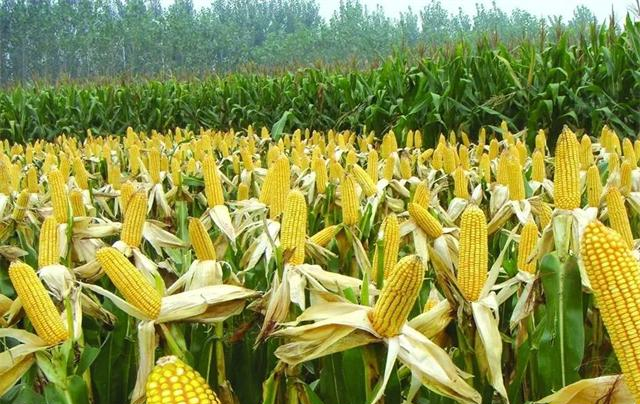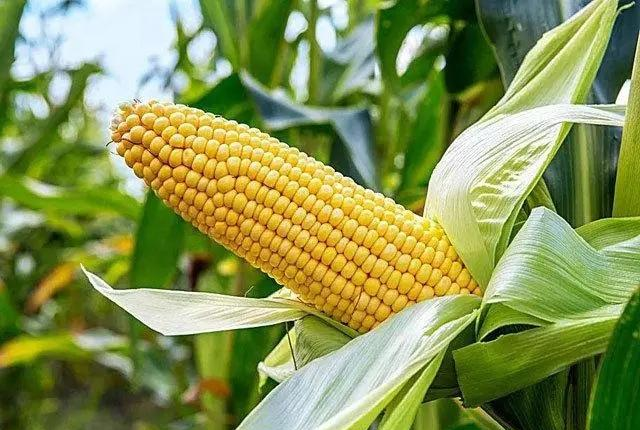After the corn grows to the later stage, what are the places to pay attention to in gardening, and do you need to water it?
When growing corn in the countryside, watering is very important, otherwise it will affect its later growth. Generally speaking, when planting corn, if there is no watering before sowing, some drought after emergence, do you want to water it?

Whether it is corn, wheat or any crop, there is no specific summary of watering time. Farmers can not blindly copy the knowledge from books when they are farming. If, from a scientific farming point of view, the corn needs a lot of water every growing cycle, you can't water all the corn. Don't follow the book, don't read the book, Don't learn from others, this is the way.
When to water corn depends on the degree of drought in the cultivated land. If the land is short of water and the corn is dry, the leaves will droop. On the contrary, if the ground is wet, the corn will grow well. According to the growth cycle theory, you are watering blindly. Isn't that a waste of time, money and water? Flexible farming and management in accordance with local conditions is based on the actual situation of intensive farming management, which should be the performance of land experts.
In general, corn is pelleted at the end of the filling period and does not need to be watered near maturity. At this point, even if the corn field is dry, continuous watering will not have a real impact on the increase in corn yield. On the contrary, in the later stage of maize growth, the self-weight of maize itself is the top weight, and the bearing capacity of the plant is too heavy. If flood irrigation is used, it will inevitably decline during thunderstorms and high winds, and while lodging at this time will not result in a significant decline in corn yields, it will be difficult to affect the quality of the corn grains and the subsequent harvest. Therefore, it is recommended not to water late in the harvest, which is not worth the loss.
Take summer corn grown in the north. At the end of the growth period, watering is not considered. First of all, the growing cycle of summer corn coincides with the rainy season in the north. In the middle and late stage, the main problems in maize growth management are drainage and lodging. Second, if the watering is indeed dry, it should be prepared in the early stages of grouting, and it is too late to consider this question.
Regardless of the weather and rainfall, it is essential to cover water during the eclosion period. Drought can result in maize that is sown after the wheat harvest not coming out of the field smoothly, resulting in incomplete emergence, weak seedlings and small and large seedlings. After irrigation with mulching water, the overall emergence rate of maize can be fully guaranteed. In addition, maize seedlings need less water, strong drought resistance, irrigation does not need a long time after the water mulch.
In the big bell period of corn jointing, if the weather continues to be dry and dry, and the meteorological department predicts that there will be no significant rainfall in the second half of the month, the watering will be earlier rather than later. At this time, should not choose flooding. Generally speaking, it is OK to flood the ground along the river, because this is the time when the rainy season in the north comes, it will rain, it is only a matter of time, so we must pay attention to the amount of water. When choosing to water, we must pay great attention to the local weather forecast to avoid strong winds and thunderstorms.
The water demand of maize is different in different periods. The management generally follows the principle of“Two heads are small, the middle is big”. The so-called“Two heads are small” refers to the early and late stages of maize growth, and the demand for water is small, in the middle stage, from jointing stage to filling stage, the water demand is the largest. According to the determination, the corn seedling water demand is not big. As long as the soil moisture content in about 60% , can meet the normal growth of maize seedlings. On the contrary, if the soil moisture content is too large, it is easy to lead to vigorous growth of maize seedlings, not conducive to late growth.
The water requirement of maize seedling is small, and it is not suitable to water when the drought affects the growth. Moderate drought at seedling stage can promote the development of maize root system, promote the binding and downward extension of root system, not only help to improve the ability of water absorption and fertilizer supply, but also can significantly improve the ability of lodging resistance of maize plants, this is beneficial to improve plant stress resistance and increase yield. If there is more water in the seedling stage, the root system usually distributes shallowly in the soil, and the lodging resistance of the plant is poor. In addition, when the late need of fertilizer and water, soil depth can not absorb water and fertilizer, easy to affect the high yield of maize.
If the leaves are found rolling vertically at noon, called locks, the soil is a bit dry. If the lock is left for a long time and the temperature drops, it can not be recovered. In particular, if the latch is still present in the morning and evening, it should be watered in time. However, do not water too much to avoid excessive humidity affecting the roots or exacerbating the spread of disease in the field. Sprinkler irrigation or drip irrigation is generally appropriate, the amount of irrigation is generally 30 cubic meters. When the soil surface turns white after watering, hoeing and cultivating should be carried out in time to prevent the soil surface from hardening, improve the soil's ability of moisture and heat preservation, promote the development of roots, and improve the ability of resistance to adversity.

Maize seedlings are not afraid of drought; if some drought is found after emergence, watering can easily cause damage to maize seedlings. This is because in the maize seedling stage, the root system is not developed, the maize seedling to the moisture requirement is not high. At this time, too much water in the soil, affecting root respiration, causing damage to the seedlings, the so-called suffocation seedlings; once this phenomenon occurs, it is not conducive to the late growth of maize seedlings. As a result, maize seedlings can not be watered even when they are dry; however, after planting maize, if drought is found, it can be watered, which is very beneficial for the full and strong seedlings of maize.
In short, maize seedlings can be properly watered in a dry situation, but we should grasp that improper watering may lead to seedling death. When maize seedlings are first planted, there is an adaptation period and many people mistakenly think it is time to water them. In fact, this period is the most drought-resistant period of maize, the appropriate drought will make maize root growth. If the drought is not serious, don't water it.
On the contrary, watering at this time will cause the corn root rot, if encountered late spring cold, may freeze to death. If the drought is severe and the leaves of the corn are shriveled, it is necessary to water it. However, it is better to sprinkle rather than flood. It is necessary to control the amount of water, not too much.


